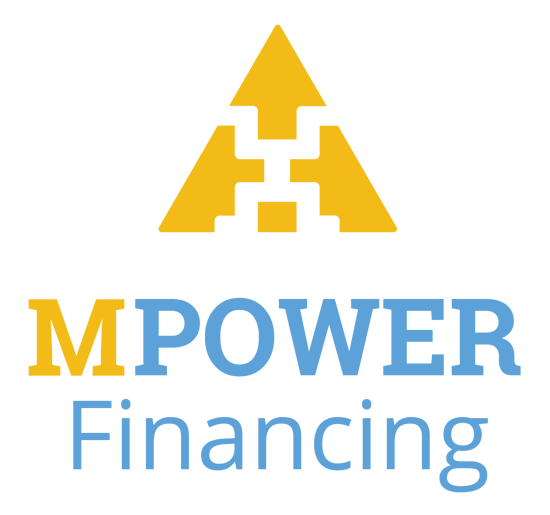Student Loan Debt: How Much Do Borrowers Owe in 2025?
U.S. student loan debt totals $1.77 trillion, and the average undergraduate borrower owes $29,300. Here are the key student debt statistics to know for 2025.

Many, or all, of the products featured on this page are from our advertising partners who compensate us when you take certain actions on our website or click to take an action on their website. However, this does not influence our evaluations. Our opinions are our own. Here is a list of our partners and here's how we make money.
U.S. student loan borrowers collectively owe $1.77 trillion in federal and private student loan debt in 2025, according to the most recent quarterly tally by the Federal Reserve. The average borrower with undergraduate student debt owes $29,300, per College Board.
Here are the key 2025 student loan debt statistics to know, including how much borrowers owe, the types of loans they have and how they're repaying them.
Advertisement



Student loans from our partners

on SoFi® website
SoFi® 

Fixed APR
4.24-9.99%
Min. credit score
650
on Earnest website
Earnest 
Fixed APR
3.72-9.99%
Min. credit score
665

on Credible’s website
ELFI 

Best for faster repayment options
Fixed APR
4.88-8.44%
Min. credit score
680
Key data: Average student loan debt
Fifty percent of bachelor’s degree recipients graduated with student debt in 2022-23, according to the most recent data available from College Board.
The average U.S. household with student debt owes $55,777, according to NerdWallet’s 2024 household debt study, published in January 2025.
Some borrowers say they regret borrowing for college. While 57% of Americans think four-year college is worth the cost, 30% of those who took out student loan debt for themselves don’t think that their college education was worth the debt, according to a June 2024 NerdWallet study.
Here's the average student debt per borrower with outstanding loans, by degree type:
| Debt type | Average debt |
|---|---|
| $29,300. | |
| $77,300. | |
| $30,639. | |
| $132,740. | |
| $51,850. | |
| $212,341. | |
| $296,500. | |
| $170,956. | |
| $40,000-$54,999. | |
| $202,647. | |
Sources1. 2024 College Board. 2. 2019-20 National Center for Education Statistics. 3. Q4 2024 Federal Student Aid Portfolio. 4. 2019-20 National Center for Education Statistics. 5. 2019-20 National Center for Education Statistics. 6. 2024 Association of American Medical Colleges. 7. 2023 American Dental Education Association. 8. 2024 American Association of Colleges of Pharmacy. 9. 2017 American Association of Colleges of Nursing. 10. 2024 American Veterinary Medical Association. | |
» MORE: Student loan payment calculator
Demographic data: Who has student loan debt?
Roughly 42.7 million Americans have outstanding federal student loan debt — that's about 12.5% of the U.S. population, per census data.
Borrowers between the ages of 50-61 have the most federal student loan debt, on average. Here’s the full breakdown by age group:
| Age group | Total outstanding debt | Number of borrowers | Average debt per borrower |
|---|---|---|---|
| 24 and younger | $96.3 billion. | 6.8 million. | $14,162. |
| 25-34 | $487.3 billion. | 14.7 million. | $33,150. |
| 35-49 | $646.6 billion. | 14.6 million. | $44,288. |
| 50-61 | $290.1 billion. | 6.2 million. | $46,790. |
| 62 and older | $121.5 billion. | 2.8 million. | $43,393. |
Source: Federal Student Aid, Portfolio by Age, Q4 2024.
Among student borrowers, women take out an average of $31,276, while men borrow an average of $29,270, according to a 2021 data analysis by the American Association of University Women.
Black women owe a disproportionate amount of student debt. They hold 43% more undergraduate debt and nearly 99% more graduate school debt than their white woman counterparts 12 months after graduation, according to an April 2022 study by the nonprofit organization The Education Trust.
Total federal student loan debt
Most student loans — about 92.4% — are owned by the government.
- Total federal student loan borrowers: 42.7 million.
- Total outstanding federal student loan debt: $1.64 trillion.
Sources: Enterval Analytics, Private Student Loan Report, Aug. 22, 2024; Federal Student Aid, Portfolio Summary, Q4 2024.
Total private student loan debt
Private student loans account for 7.61% of all outstanding U.S. student loans as of March 31, 2024.
- Total outstanding private student loan debt: $133.43 billion.
Source: Enterval Analytics, Private Student Loan Report, Aug. 22, 2024.
Total Parent PLUS loan debt
Parents have one federal student loan option to help pay for their children's education: parent PLUS loans.
- Total parent PLUS debt: $110.3 billion.
- Total parent PLUS borrowers: 3.6 million.
- Average parent PLUS loan debt: $30,639.
Source: Federal Student Aid, Portfolio by Loan Type, Q4 2024.
Advertisement



Student loans from our partners

on SoFi® website
SoFi® 

Fixed APR
4.24-9.99%
Min. credit score
650
on Earnest website
Earnest 
Fixed APR
3.72-9.99%
Min. credit score
665

on Credible’s website
ELFI 

Best for faster repayment options
Fixed APR
4.88-8.44%
Min. credit score
680
Expected college debt for a 2024 high school grad
A 2024 high school graduate could expect to borrow $36,700 for their bachelor’s degree, according to an April 2023 NerdWallet analysis of National Center for Education Statistics data that assumes a five-year undergraduate career.
This estimate dipped slightly from 2023, when high school graduates were poised to borrow up to $37,300 in student loan debt.
Student loan repayment data: How many borrowers are making payments?
Federal student loan repayment
If borrowers can't make payments, they can postpone them through deferment or forbearance.
- Federal loan borrowers in school: 6.1 million.
- Federal borrowers in grace period: 1.6 million.
- Federal loan borrowers in repayment: 18.7 million.
- Federal loan borrowers in deferment: 3.2 million.
- Federal loan borrowers with loans in forbearance: 9 million.
Source: Federal Student Aid, Portfolio by Loan Status, Q4 2024.
Private student loan repayment
Borrowers can also postpone private student loan payments via deferment or forbearance, but unlike federal loans, interest always accrues during these periods. Default terms vary by lender, but it may occur as soon as 90 days after nonpayment.
- Percentage of private loans in repayment: 75.91%.
- Percentage of private loans in in-school deferment: 19.33%.
- Percentage of private loans in forbearance: 1.86%.
- Percentage of private loans in grace period: 2.91%.
Source: Enterval Analytics, Private Student Loan Report, Aug. 22, 2024.
» MORE: Student loan payoff calculator
Federal student loan forgiveness data
The government can forgive federal student loans through programs like income-driven repayment (IDR) and Public Service Loan Forgiveness (PSLF). Borrowers who’ve been defrauded by their schools may also be eligible for loan forgiveness.
Public Service Loan Forgiveness
- Total debt forgiven: $78 billion.
- Number of borrowers to receive forgiveness: 1,062,870.
- Average amount of forgiveness per borrower: $73,386.
- Total PSLF applicants (includes applications that haven’t yet been processed): 6,147,812.
Source: U.S. Department of Education, press release, Dec. 20, 2024; Federal Student Aid Office, Public Service Loan Forgiveness Data, June 2023. Applicant data includes Temporary Expanded Public Service Loan Forgiveness and the PSLF waiver.
Income-driven repayment forgiveness
- Total debt forgiven: $56.5 billion.
- Number of borrowers to receive forgiveness: 1.4 million.
- Average amount of forgiveness per borrower: $40,357.
Source: U.S. Department of Education, press release, Dec. 20, 2024.
These figures include automatic IDR account adjustment forgiveness, a program that attempted to rectify past issues in IDR management. As of 2021, only about 157 borrowers had ever received IDR loan forgiveness because the Education Department and servicers had mismanaged the program, the Government Accountability Office found.
Borrower defense to repayment & closed school discharge
- Total debt forgiven: $28.7 billion.
- Number of borrowers to receive loan discharge: 1.6 million.
Total and permanent disability discharge
- Total debt forgiven: $16.2 billion.
- Number of borrowers to receive loan discharge: 572,000 borrowers.
Source: U.S. Department of Education, press release, Dec. 20, 2024.
Student loan default data
Student loan default happens after a period of missed payments. Most federal student loans enter default after roughly 270 days (or nine months) past due. Private student loans typically enter default after three missed payments (typically three months), but it can happen as soon as after one missed payment.
- Federal loan borrowers in default: 4 million.
Source: Federal Student Aid, Portfolio by Loan Status, Q4 2024.
Income-driven repayment plans: How many borrowers are enrolled?
IDR plans cap monthly payments at 10% to 20% of a borrower’s discretionary income and forgive any balance remaining after 20 or 25 years, depending on the plan and loan type. Only federal student loan borrowers are eligible for these repayment plans.
As of the summer of 2024, lawsuits have blocked the newest IDR plan, Saving on a Valuable Education (SAVE). Borrowers enrolled in SAVE were placed in an indefinite interest-free forbearance. They don’t owe any payments during this time.
» MORE: How the SAVE lawsuits impact you
| IDR plan | Borrowers enrolled |
|---|---|
| 8 million. | |
| 1.34 million. | |
| 1.91 million. | |
| 1.24 million. | |
| Source: Federal Student Aid, Portfolio by Repayment Plan, Q4 2024. | |
FAFSA submission data
Students and their families must submit the Free Application for Federal Student Aid (FAFSA) to be eligible for grants, scholarships, work-study and federal student loans. High school graduates who complete the FAFSA are 84% more likely to immediately enroll in postsecondary education.
- Percentage of 2022 high school graduates who completed the FAFSA: 56%.
- Percentage of 2022 high school graduates who did not complete the FAFSA: 44%.
- Average Pell Grant amount award for eligible class of 2022 graduates: $4,686.
- Total amount of Pell Grant money the class of 2022 left on the table by not completing the FAFSA: $3.58 billion.
Source: National College Attainment Network, “Pell Dollars Left on the Table,” January 2023.
Article sources
NerdWallet writers are subject matter authorities who use primary,
trustworthy sources to inform their work, including peer-reviewed
studies, government websites, academic research and interviews with
industry experts. All content is fact-checked for accuracy, timeliness
and relevance. You can learn more about NerdWallet's high
standards for journalism by reading our
editorial guidelines.
AD
Refinance Your Student Loans with Earnest: smarter rates, total flexibility, no fees.
Check rate
on Earnest's website

AD

Refinance Your Student Loans with Earnest: smarter rates, total flexibility, no fees.
- Fixed APRs starting at 3.72%, Variable Rates starting at 5.88%;
- Customize your term down to the month (5–20 years);
- Skip one payment every 12 months.
Check rate
on Earnest's website
AD
Refinance Student Loans with SoFi:
low rates, flexible terms, no fees.
Check rate
on SoFi®'s website

AD

Refinance Student Loans with SoFi:
low rates, flexible terms, no fees.
- Rates: 4.74-9.99% (fixed) / 5.99-9.99% (variable) APR;
- Terms between 5–20 years, plus features like interest-only SmartStart for residents;
- Zero application/origination/prepayment fees — ever.

Check rate
on SoFi®'s website





